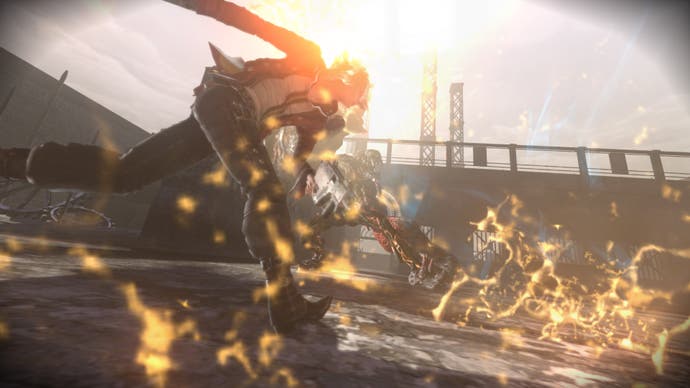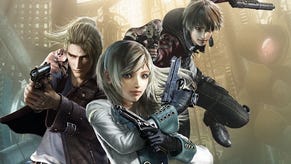Resonance of Fate
A towering achievement?
Released within weeks of one another, Final Fantasy XIII and Resonance of Fate present two fiercely independent visions of the contemporary Japanese role-playing game. The former is a retreat into the formative traditions of the genre, a linear trek along narrow interactive lines that link endless CG cut-scene pitstops.
Its orthodoxy may be cloaked by an advance into dazzling new technological stomping grounds, but with character designs focus-tested to within an inch of their personality and a celebrity endorsement from Leona Lewis, Final Fantasy XIII's populist approach is a concerted attempt to appeal to the everyman gamer.
Gone is that lilting arpeggio signature theme that soundtracked every preceding game in the series, a shrugging off of the trappings of convention, despite the fact that the underpinning mechanics are often as old as videogame time.
Tri-Ace's latest, by contrast, appears orthodox at a glance, with towns filled with jabbering NPCs, eager merchants, and fetch-quest assignments and an overworld peppered with random battles, dungeons, treasure chests and boss battles.
But beneath the surface, Resonance of Fate eschews convention at every turn, withholding the basic structure of its lineage but changing almost every one of its details to create a radical, fascinating departure from the norm.

In this world magic and swords are discarded in favour of Victorian firearms and John Woo-esque acrobatics. Characters wheel and dive in kinetic, semi-real-time gun duels overlaid by all manner of tickers, timers and statistical readouts.
Meanwhile, cut-scenes are pared back to the bone, the world primarily revealed through expressive character and environment design rather than reams of dialogue and supplementary encyclopedic text.
Even the geography of the traditional role-playing game is upturned, the traditional hero's journey from pastoral village out to the ends of a troubled earth rotated to a vertical climb up a decaying steampunk tower of Babel.
Likewise, while Square-Enix's refined blockbuster reveals its battle system in painfully small increments, tri-Ace presses almost every one of its mechanical complexities into your palms from the off. Not only this, but the game demands prompt mastery, punishing any gap in its players' understanding in no uncertain terms.
For gamers mollycoddled by gaming's general trend towards lenience in recent years, and the specific tendency of RPGs to demand perseverance over proficiency, it's a rude awakening. Indeed, this is one of those few games in which you must pay in-game credits to continue from a Game Over screen, with tiered payment plans depending on how much of your party's energy you wish to restore.
The story focuses on a group of three housemates, Leanne, Zephyr and Vashyron (voiced by the ubiquitous Nolan North, best known for his turn as Uncharted's Nathan Drake). The trio work together as 'hunters', freelance mercenaries who carry out odd jobs for the tower's aristocracy, who are housebound thanks to the bandits and rogue robots who roam the overworld.

Towns, built on the various tiers of the game's gargantuan tower (an air purifier upon which entire communities have sprung up), are explored in a similar style to those in tri-Ace's Valkyrie Profile series. While built in intricate 3D, your character generally moves along a 2D horizontal plane, perspective on the rusty walkways and Elizabethan-style houses shifting as you move left and right.
A world of cogs, candles and clockwork, the aesthetic is one of steampunk precision, all dainty streetlamps, nostalgic frocks and cobblestones rounded by decades of footfall. A John Williams-esque orchestral score swashes through the streets, combining with the de-saturated colours to create a haunting effect of second-hand nostalgia.
The world map is composed of hexes, the vast majority of which are closed off at the beginning of the game. To unlock frozen hexes you must rotate and lay 'Energy hexes' on top of the area you want to unfreeze, rather like laying Tetris blocks onto a gridded map. These come in various shapes and configurations and are won by defeating enemies.
As you unfreeze new areas of the map, so new locations are opened up to your team. Some areas can only be unlocked with special coloured hexes, won from NPCs or by taking on key missions. This mechanic allows the game's designers to stagger access to the tower, while still allowing the player some freedom to explore those parts of the world they want to explore.
It's a neat system and, with bonuses for clearing all of the hexes on a tier of the tower, introduces a gentle puzzle dynamic in trying to find the correct shaped energy hexes to unlock those hard to reach corners.



